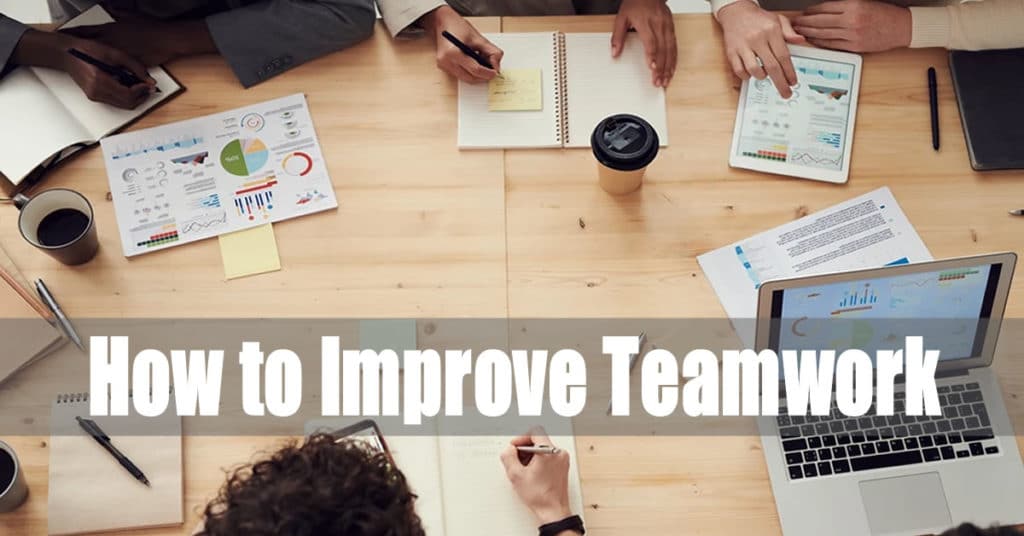Have you ever tried to get out of quicksand? If you haven’t you’ve likely seen movies of people who step into quicksand and eventually sink. A lack of trust is like quicksand. A company without trust may find itself slowly sinking only to look back years and just realize how bad the situation is and wonder, “How did this happen?” It is because of a lack or failure of trust.
Many new managers ask the question, “Why does trust matter in the workplace?”
The answer is trust is the foundation of your organization and from there strong pillars can be built. Yet, without trust, your foundation for your team, department, or company will sink.
When trust is high, a business can flow quickly and people will organize themselves behind your cause and your company. Recently I arrived at the Boise International Airport in Boise, Idaho, while I did get through security relatively quickly, the TSA agents still serve as a reminder of the 9-11 tragedy that changed how we operated as a result of fear, safety, and preserving our security.
As I moved past security I approached Einstein’s Bagels in the airport and noticed there was upwards of 15 customers standing in line. However, before the line was an honor bar and the sign read- “HONOR BAR-CASH ONLY- coffee $3 / coffee and a bagel $5.” What a grand idea and this presumably would require the honor system. I did not need a bagel, just a cup of coffee. I happily put in my $5 bill (I had no singles) and avoided a dreaded long line. My purchase allowed their business to flow quickly. They trusted me and I was grateful.
What is trust?
We have asked our workshop participants this very question. Trust means something different to everyone. We have heard things like…Trust is…
- I know my people will show up on time
- I expect others to respect me
- My boss will listen to me
- You will do your job without me reming you
- My collegues have my back
- I can call you when I have a problem
- You do not violate my confident conversation with you
- Respect others’ persepctives
- Look out for other’s interest not just your own
- DWYSYWD- do what you say you will do
No wonder why it can be hard to understand what trust is. Bottom line people say I don’t know how to explain it exactly but I can tell you when I see it or feel it.
Best-selling author Patrick Lencioni and his best-selling book, The Five Dysfunctions of a Team shares that trust is the building block of strong teams. Pat defines vulnerability-based trust as someone who can speak freely, admit mistakes and shortcomings, and say I need help and don’t have all of these things figured out yet. Some might find doing this as a sign of a weak leader. Yet, like Lencioni, I would argue this is a sign of a strong leader. A strong leader who truly walks the talk; a lead by example type of person. The good news is trust can be consciously created.
The importance of trust in the workplace
If you want to influence someone in the workplace trust is a vital component. Influence begins by how you demonstrate warmth. We will define warmth as a feeling of genuine, positive intent from another person. Okay, that is nice, so how do you project that? Some researchers have found that just merely holding a warm drink, say coffee, gives the perception that the person holding the warm drink is trustworthy and warm. On the other hand, hold a cup of cold iced tea, and this makes the drink holder appear colder.
Warmth is projected largely by our body language and behavior. The role of warmth is a vital component to build rapport. Here is the secret sauce to use to help build rapport. TRUST + WARMTH = RAPPORT. Trust is a needed ingredient to create rapport. Warmth is the next ingredient to build rapport. How people judge if another has warmth is almost entirely through body language.
A research study conducted by Dr. Steno, Professor of Psychology at North Eastern University showed that crossing arms, touching one’s face, folding your hands, and leaning back are quick body language cues that tell someone not to trust you. People who did not display these four characteristics were found to be more trustworthy. To further confirm his findings, Dr. Steno conducted this same study, yet instead of two humans interacting, he used a person and a talking robot. The robot when displaying the same four characteristics above was found to be less trustworthy. Oddly enough, even a robot who did not display these cues was found to be trustworthy.
Tell me the reason behind the decline in trust in the workplace?
So many – where to start! Remember the Great Recession back in 2009? UPS shared we will not lay off our workforce. Only to find that three months later they started laying people off just like other organizations were doing. Here is a shortlist of reasons for a decline in trust:
- Layoffs
- Reorganization
- Merger
- Sale of the company
- New leader
- New process & programs
- New team members
- A legal misstep by a company; either intentional or unintentional
- Not following through on something said
- Not getting promoted
The number one reason for a decline in trust in the United States according to a 2019 Pew Research study is…people do not have as much confidence in each other as they once used to. We can even look at our Top 10 List of reasons for the trust decline and it’s no wonder why people lack confidence in each other. Layoffs or reorganization is a prime example. UPS surprised their employees in 2009/10 when they announced a massive lay off and restructure to their company,
The next important question to ask is “what are signs of distrust.” A few signs could be lack of information sharing, employees not approaching their manager, the manager being the last to know something going on with the team, and even people calling out sick.
How do you rebuild trust in a team?
Trust starts with a relationship with people. Some individuals are great and making connections with other people, and for others, this area is a struggle. What we find is when a person’s power increases their perceived trustworthiness begins to drop. Think of this…two peers have been working together for three years, and one is promoted to the manager. Will their relationship stay the same? Yes and no. We have seen and heard firsthand, the now direct report may start to lessen the same transparent conversations they once had with their new manager. Here is when trust starts to erode. The new leader needs to continue to have an open line of communication with his/her past peers.
We find leaders have one of two beliefs around “friendships” in their workplace with their employees. Is like a two-sided coin. One side of the coin is the belief that employee friendships are taboo. After all, the leader may have to reprimand a “friend” and now that would be uncomfortable. The other side of the coin is to keep relationships close. Have a hand on the pulse of your employees. We believe it is important to know what is going on with them personally and professionally. Of course, you do not feel the need to fix their problems, nor be their therapist. Empathy can go a long way. Empathy is one of the hardest skill sets for leaders to develop, especially if they don’t have much of it. So be sure to display empathy if you possess it!
There are other reasons why a trust may have eroded. In the situations where someone believes someone has “done them wrong,” we ascribe to Stephen Covey’s Behavior #4: Right Wrongs in his book The Speed of Trust. In righting a wrong, an individual needs to go farther than just offering the obligatory apology. Restitution needs to be made in order to “right the wrong.” The other ingredient that needs to accompany restitution is showing personal humility. You may have seen people “apologize” for something, yet in the next breath, they are finding a scapegoat and a reason for why they did what they did. Just own it- don’t pass the buck.
Another way to increase trust is by creating an “ovation.” Ovation as coined by Paul Zak, in his book The Trust Factor, is used to increase organizational trust simply by recognizing those who meet or exceed their goals. Paul uses neuroscience research to support his views and recommendations on how to increase trust.
What are three things you can do to build trust with your team?
Leadership gurus, Zenger & Folkman (2019) conducted a study and looked at the 360 assessment surveys from 87,000 leaders. The research looked at trust and attempted to make a correlation to all other items in the 360 assessment being measured. What they found was a leader’s trust ratings could be explained by the common parts:
- Positive relationships. To instill trust leaders need to be able to empathize with others. Empathy is one of the most difficult skills to develop if one does not naturally possess it. A leader needs to not only manage their own conflict with others, yet be able to help others navigate conflict between each other. Providing transparent feedback that is helpful not harmful is necessary.
- Good judgement and expertise. The ideas, opinions, and decisions of leaders is important. This becomes evident when other people come to leaders for their feedback. People want to know their leader is competence and has a level of knowledge and expertise in certain areas.
- Consistency. Leaders who walk the talk and do as they say will be viewed as being consistent. Do what you say and say what you do can be a first step to consistency.
The study went on to measure how much trust could a leader garner if they only displayed one of the three elements. Positive relationships is the number one game-changer.
What are 10 ways that you can build the trust and confidence of colleagues?
After researching this topic ourselves at Cooper Consulting Group we came up with a Trust Card exercise. There are 12 behaviors we found that came up numerous times in our research. The behaviors are presented below and are in no particular order:
- Be vulnerable
- Value relationships
- Demonstrates integrity
- Sets clear guidelines
- Recognize excellence
- Facilitates whole person growth
- Keeps promises
- Is respectful
- Listens with intent
- Good judgement
- Talks withtransparency
- Goes above and beyond
We use a reflective activity during our trust workshops that allow participants to consider how the 12 trust behaviors can impact how they work with others.
How can we improve team cohesion?
Improving team cohesion can give your team a competitive advantage. Think about a winning race car team and how quickly they can execute a pit stop. Each person on the team knows their role, their expectations, and clearly relies on each other to flawlessly execute their precise job. It takes a winning pit team just 1.82 seconds to change tires, top the tank with gas, and conduct a few other checks. Now, if the boss had to inspect each person (lack of trust) this process will be significantly slower.
At Cooper Consulting Group we have two very specific programs to help teams build trust. Each uses an assessment; one uses the Myers Briggs Type Indicator Instrument (MBTI®)and the other uses DISC and a team assessment survey. These two programs can be delivered individually as a stand-alone session or they can be used in conjunction and the programs complement each other very well.
If you have identified trust as an area that needs to be increased, our expert team of consultants, facilitators, and coaches are here to provide direction, training, or support for you, your team, and your organization. If you allow a trust to continue to erode you will soon find yourself in quicksand!




